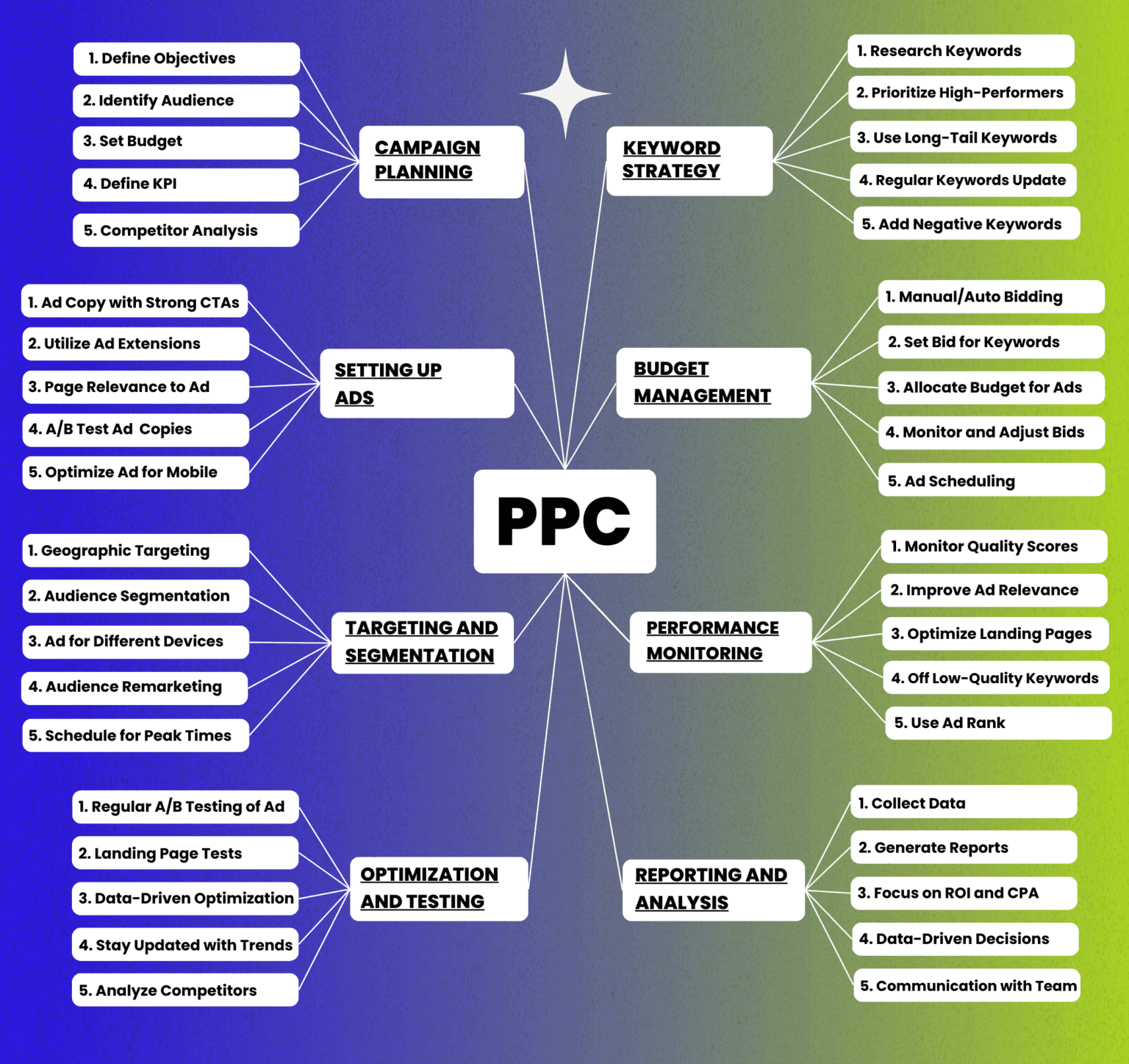Welcome to the world of precision-driven PPC advertising! I’m Andrew Matsegora, ready to guide you through the impactful realm of targeted advertising on Google and Bing.
Pay-Per-Click advertising is a potent tool in the digital marketer’s arsenal, offering the unique ability to place your brand directly in front of the right audience at the right time. In the complex yet fascinating landscape of Google and Bing ads, precision is key, and every click is a new opportunity for growth.
What does PPC offer to your brand? It’s the gateway to immediate visibility and tailored reach. Unlike traditional marketing methods, PPC allows for an agile approach, where strategies can be adjusted in real-time for optimum performance. It’s not just about driving traffic; it’s about driving the right traffic – potential customers who are actively seeking what you offer.
The beauty of PPC lies in its data-driven nature. We meticulously analyze market trends, search patterns, and consumer behavior to craft campaigns that are not only creative but also highly effective. This is about strategic placements, compelling ad copy, and continuous optimization to ensure the highest return on your investment.

1. Immediate Traffic and Leads:
• PPC advertising delivers instant results by driving relevant traffic to your website. This influx of visitors can quickly translate into potential leads and sales, making PPC an effective short-term strategy.
2. Precise Targeting:
• PPC platforms enable you to target your audience with exceptional precision. You can define your audience by keywords, location, demographics, and even device type, ensuring your ads reach the most relevant prospects.
3. Budget Control:
• You have complete control over your PPC budget. You can set daily or monthly spending limits, ensuring you stay within your financial constraints while still effectively reaching your audience.
4. Measurable ROI:
• PPC provides comprehensive analytics and performance metrics. You can track the number of clicks, conversions, and costs associated with your campaigns, allowing you to calculate the exact return on investment (ROI) for your advertising spend.
5. Adaptability and Optimization:
• PPC campaigns are highly adaptable. You can make real-time adjustments to keywords, ad copy, and targeting to maximize performance. Regular optimization helps you get the most value from your advertising budget.
6. Enhanced Brand Exposure:
• Even when users don’t click on your ads, they still see your brand’s name and message. Consistent exposure builds brand recognition and trust, which can influence future buying decisions.
7. Competitive Edge:
• PPC allows businesses of all sizes to compete on a level playing field. Your ads can appear alongside those of larger competitors, giving you a chance to capture market share and visibility.
8. Keyword Insights:
• PPC campaigns provide valuable keyword data. By analyzing which keywords generate the most clicks and conversions, you gain insights that can inform your overall digital marketing and SEO strategies. Additionally, you can discover new keywords that resonate with your audience.
Incorporating PPC into your marketing strategy provides a powerful tool for driving targeted traffic, managing costs, and gaining valuable insights into your audience’s preferences and behaviors. It’s an indispensable component for businesses seeking quick, measurable results and the ability to adapt to changing market conditions.
1. Missed Immediate Leads:
• Neglecting PPC means you’re missing out on immediate opportunities to connect with potential customers. These individuals are actively searching for products or services like yours, and without PPC, your competitors may capture these leads instead.
2. Diminished Online Visibility:
• PPC ads typically appear at the top of search engine results pages (SERPs), granting prime visibility. Without PPC, your website may not secure such prominent placement, leading to reduced visibility and fewer clicks.
3. Slower Traffic Growth:
• Organic traffic from search engines can take time to build. By neglecting PPC, you might experience slower growth in website traffic, which can hinder your ability to generate leads and sales online.
4. Stunted Business Expansion:
• PPC is a powerful tool for accelerating business growth. Ignoring it can result in slower expansion, particularly if your competitors are actively utilizing PPC to gain market share and reach a wider audience.
5. Ineffective Audience Targeting:
• PPC offers precise targeting options, enabling you to reach your ideal audience. If you neglect PPC, you’re not leveraging this capability, potentially wasting resources on less effective marketing channels.
6. Underutilized Data Insights:
• PPC campaigns generate valuable data and insights into consumer behavior, keyword performance, and ad effectiveness. By neglecting PPC, you miss the opportunity to gather and leverage these insights to inform your broader digital marketing and business strategies.
In essence, neglecting PPC can lead to missed opportunities, reduced online visibility, slower growth, and a competitive disadvantage. It’s a measurable and efficient advertising channel that, when properly managed, can drive immediate results, conversions, and overall business success. Businesses should carefully consider the potential consequences of neglecting PPC within their broader marketing strategy.
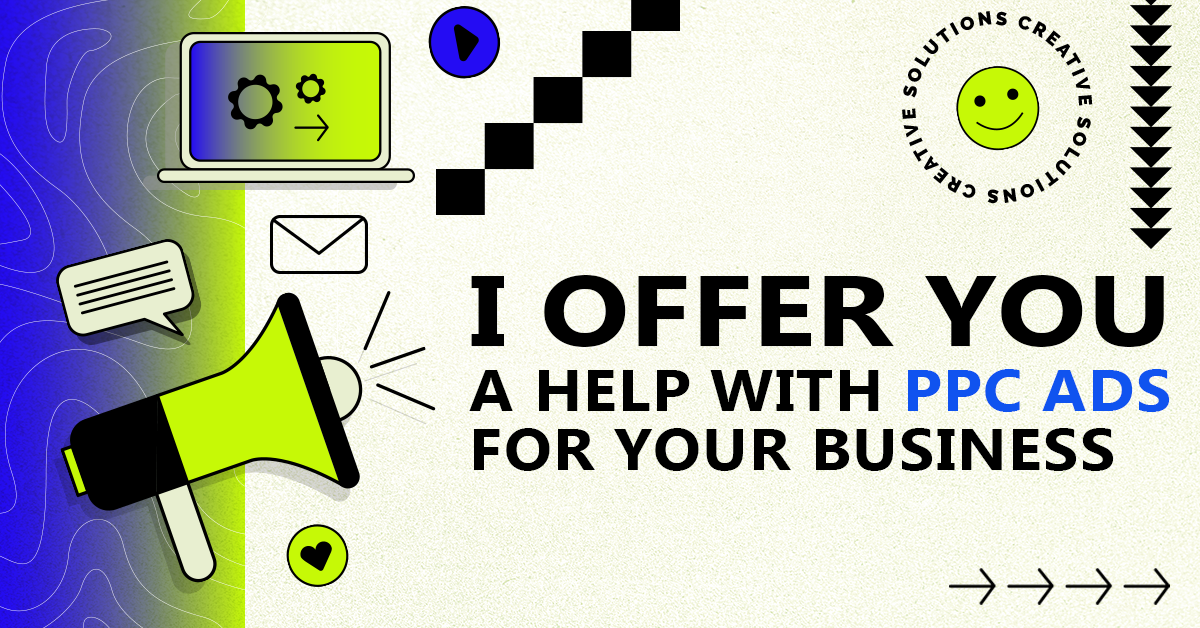
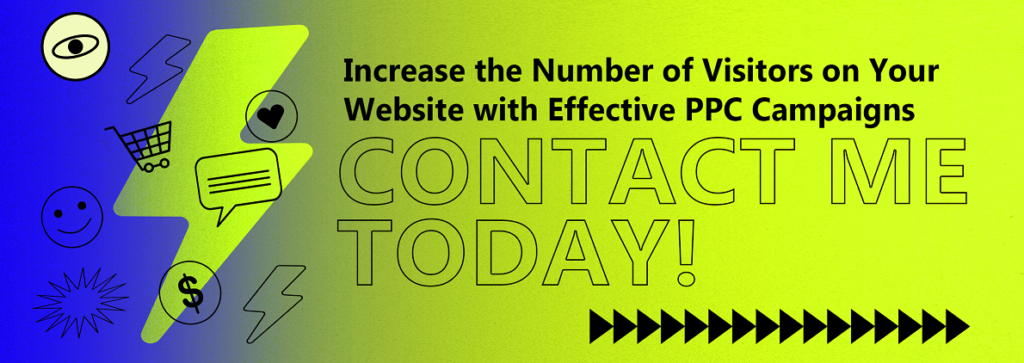
PPC (Pay-Per-Click) advertising can be implemented on various online platforms. Here’s a description of some of the key platforms commonly used for PPC advertising:
1. Google Ads (formerly Google AdWords):
• Google Ads is one of the most popular and widely used PPC advertising platforms. It allows advertisers to create and manage text-based search ads, display ads, video ads on YouTube, and shopping ads. Google Ads offers extensive targeting options, including keywords, demographics, location, and more. It displays ads on Google Search, Google Display Network, YouTube, and partner websites.
2. Bing Ads (Microsoft Advertising):
• Bing Ads, now known as Microsoft Advertising, is a PPC platform that focuses on search advertising. It enables advertisers to create search ads similar to Google Ads but targets users on Bing, Yahoo, and other Microsoft-owned properties. Bing Ads is especially valuable for reaching users who prefer these search engines.
3. Facebook Ads:
• Facebook Ads is a robust social media advertising platform that offers various ad formats, including image ads, video ads, carousel ads, and more. Advertisers can target audiences based on demographics, interests, behavior, and user engagement on Facebook, Instagram, and the Audience Network. Facebook Ads is ideal for brand awareness, lead generation, and e-commerce.
4. Instagram Ads:
• Instagram Ads are a subset of Facebook Ads and are specifically designed for advertising on the Instagram platform. Advertisers can leverage visual content, including image and video ads, to reach Instagram’s user base. Instagram Ads are effective for engaging younger and visually-oriented audiences.
5. LinkedIn Ads:
• LinkedIn Ads cater to a professional and B2B audience. Advertisers can create sponsored content, sponsored InMail, display ads, and more to target LinkedIn users based on job titles, industries, skills, and company size. LinkedIn Ads are effective for B2B lead generation, recruitment, and brand promotion.
6. YouTube Ads:
• YouTube Ads allow advertisers to display video ads on the YouTube platform. Ad formats include skippable in-stream ads, non-skippable ads, and more. YouTube Ads are effective for video content promotion, brand awareness, and engagement.
7. Amazon Advertising:
• Amazon Advertising is tailored for eCommerce businesses looking to advertise products on Amazon’s marketplace. Advertisers can run sponsored product ads, sponsored brand ads, and sponsored display ads to target shoppers actively searching for products.
8. Pinterest Ads:
• Pinterest Ads enable advertisers to promote pins and reach Pinterest’s user base. Advertisers can target users based on interests, demographics, and keywords. Pinterest Ads are valuable for businesses in niches like home decor, fashion, and DIY.
9. Snapchat Ads:
• Snapchat Ads allow advertisers to create engaging visual ads, including video ads, story ads, and augmented reality (AR) lenses, to reach Snapchat’s younger audience. Advertisers can target users based on demographics, interests, and behaviors.
Each PPC platform has its unique features, targeting options, and audience demographics, making it essential for advertisers to choose the platforms that align with their goals and target audiences. Effective PPC campaigns leverage the strengths of these platforms to maximize results and ROI.
Click-through rate (CTR) is a crucial metric in PPC (Pay-Per-Click) advertising that measures the effectiveness of your ads in terms of generating clicks. It is calculated by dividing the number of clicks your ad receives by the number of times it is shown (impressions), expressed as a percentage.
Why CTR is important in PPC:
Indicator of Relevance: A high CTR indicates that your ad is relevant and compelling to your target audience. It suggests that users find your ad valuable and are more likely to engage with your content.
Quality Score: CTR is one of the factors that determine your ad’s Quality Score in platforms like Google Ads. A higher Quality Score can lead to lower advertising costs and better ad placements.
Cost-Effectiveness: Ads with a higher CTR are often rewarded with lower cost-per-click (CPC) rates. A good CTR can help you achieve your PPC goals while optimizing your budget.
Ad Position: In competitive auctions, a higher CTR can improve your ad’s position in search engine results pages (SERPs) or display networks. This can lead to increased visibility and more clicks.
Conversion Potential: While CTR measures clicks, it doesn’t directly measure conversions. However, a well-optimized ad with a high CTR is more likely to drive quality traffic to your website, increasing the chances of conversions.
Performance Monitoring: CTR provides valuable feedback on your ad’s performance. If you notice a declining CTR, it may indicate the need for ad adjustments or changes to your targeting.
Ad Testing: By analyzing CTR, you can conduct A/B tests to optimize ad elements like headlines, ad copy, and visuals for better results.
In summary, CTR is a fundamental metric in PPC advertising that reflects how well your ads resonate with your audience. A high CTR is an indicator of ad effectiveness and can positively impact your campaign’s performance, costs, and overall success.
Setting a budget for your PPC (Pay-Per-Click) campaigns is a collaborative process, and I’m here to guide you through it. Here’s how we can determine the right budget for your PPC campaigns together:
Define Your Goals:
- First, let’s discuss your specific campaign objectives. Are you looking to drive website traffic, generate leads, increase sales, or boost brand visibility? Your goals will shape our budget decisions.
Assess Your Market:
- We’ll analyze your industry and competition to understand the landscape. Some keywords and markets may require higher bids, while others may be more cost-effective.
Keyword Research:
- We’ll perform keyword research to estimate the average Cost-Per-Click (CPC) for your target keywords. This step helps us gauge potential costs and set realistic expectations.
Budget Allocation:
- Based on your overall marketing budget and goals, we’ll determine the portion to allocate to PPC advertising. It’s crucial to strike a balance between budget and expected results.
Conversion Consideration:
- We’ll take into account your historical conversion rates. This data will help us project how many clicks may lead to valuable actions like leads or sales.
Budget Flexibility:
- Keep in mind that PPC budgets can be adjusted as needed. We can start with a baseline budget and refine it as we monitor campaign performance.
Monitoring and Optimization:
- Throughout the campaign, we’ll closely monitor key metrics like Click-Through Rate (CTR), conversion rate, and Return on Investment (ROI). If a campaign is performing well, we can consider increasing its budget.
Regular Reviews:
- Periodic reviews of your PPC campaigns will allow us to make data-driven decisions. We can reallocate budget to high-performing areas and fine-tune targeting for maximum efficiency.
Seasonal Adjustments:
- If your business experiences seasonal fluctuations, we’ll plan for budget adjustments to align with peak periods and capitalize on demand.
Open Communication:
- Your input and feedback are valuable. We’ll maintain open communication to ensure the budget aligns with your evolving business needs and objectives.
Testing and Experimentation:
- We may run tests to optimize the budget allocation further. These tests can help us find the sweet spot for your campaigns.
Remember, our goal is to achieve the best possible results within your budget constraints. By working together and continuously optimizing, we’ll ensure your PPC campaigns deliver the desired outcomes efficiently.
Targeting your ads to the right audience is a critical step in maximizing the effectiveness of your PPC (Pay-Per-Click) campaigns. Here’s how we can work together to ensure precise ad targeting:
Define Your Audience: Let’s start by defining your ideal customer. Who are they? What are their demographics (age, gender, location)? What are their interests and behaviors?
Keyword Selection: We’ll carefully choose keywords relevant to your business and your audience’s search queries. This helps ensure your ads are shown to users actively looking for your products or services.
Location Targeting: We can geographically target your ads to specific regions, cities, or even a radius around your physical location. This is especially valuable for local businesses.
Audience Segmentation: We can create audience segments based on factors like interests, browsing history, and online behavior. This allows us to tailor ad content to different user groups.
Remarketing: If you have a list of past website visitors or previous customers, we can implement remarketing campaigns to re-engage them with tailored ads. This can boost conversions and brand loyalty.
Device Targeting: Depending on your business and goals, we can adjust ad bids for different devices (desktop, mobile, tablet) to optimize performance.
Ad Scheduling: We can schedule your ads to appear during specific days and times when your target audience is most active. This helps maximize ad exposure during peak hours.
Negative Keywords: We’ll identify and implement negative keywords to prevent your ads from appearing in irrelevant searches, ensuring your budget is used efficiently.
A/B Testing: Continuous testing of ad variations allows us to determine which messages and visuals resonate best with your audience. We’ll refine the ads based on performance data.
Conversion Tracking: Implementing conversion tracking helps us understand which ads and targeting strategies are driving valuable actions on your website. We can then focus on what works.
Analytics Review: Regularly reviewing campaign analytics and performance data allows us to make data-driven adjustments and optimizations to better target your ads.
Open Communication: Your insights about your target audience are invaluable. We’ll maintain open communication to refine our targeting strategy based on your feedback and observations.
By combining these strategies and closely monitoring campaign performance, we’ll work together to ensure that your ads reach the right audience, drive engagement, and deliver the desired results efficiently. Targeting the right audience is key to PPC success, and our collaborative approach will help us achieve just that.
PPC (Pay-Per-Click) advertising offers a variety of ad formats to suit different campaign goals and platforms. Here are the primary types of PPC ads we can explore for your campaigns:
Search Ads: These text-based ads appear on search engine results pages (e.g., Google) above or below organic search results. They are triggered by specific keywords and typically include a headline, description, and a link to your website.
Display Ads: Display ads are visual, image-based ads that appear on websites within the Google Display Network (GDN) or other advertising networks. They can include images, text, and even interactive elements. Display ads are useful for brand awareness and remarketing.
Video Ads: Video ads appear on video-sharing platforms like YouTube. They can be in-stream ads (played before, during, or after a video), non-skippable ads, or display ads within YouTube. Video ads are effective for engaging audiences with video content.
Shopping Ads: Shopping ads, also known as Product Listing Ads (PLAs), are designed for eCommerce businesses. They showcase products, including images, prices, and product details, to users searching for specific products on platforms like Google Shopping.
Social Media Ads: Social media platforms like Facebook, Instagram, Twitter, and LinkedIn offer various ad formats, including image ads, video ads, carousel ads, and more. These ads target users based on demographics, interests, and behavior.
Remarketing/Retargeting Ads: These ads target users who have previously visited your website but didn’t convert. Remarketing ads serve as reminders and can be displayed on various platforms to re-engage potential customers.
App Advertising: If you have a mobile app, you can run ads to promote app installs or engage users within the app. These ads appear on mobile devices and app stores.
Local Ads: For brick-and-mortar businesses, local ads target users in specific geographic areas. They may include location extensions and contact information, making it easier for users to find your business.
Dynamic Ads: Dynamic ads automatically generate ad content based on a user’s behavior or website interactions. They’re highly personalized and can be effective for eCommerce and remarketing campaigns.
Call-Only Ads: These ads encourage users to call your business directly from search results. They are especially valuable for service-based businesses or those looking to drive phone inquiries.
Lead Generation Ads: On platforms like Facebook and LinkedIn, lead generation ads capture user information (e.g., email addresses) directly within the ad, making it easier to generate leads.
Affiliate Ads: Affiliate marketing often involves PPC advertising, where affiliates promote products or services and earn a commission on sales generated through their ads.
Each type of PPC ad has its strengths and is suited to different campaign objectives. Together, we can determine which ad formats align with your goals and target audience, and create a well-rounded PPC strategy to maximize your advertising impact.
1. Search Campaigns:
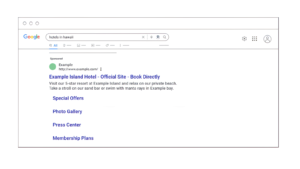
Search campaigns are text-based advertisements that appear at the top or bottom of Google search results when users enter relevant search queries. Advertisers bid on specific keywords, and when a user’s search matches those keywords, the ad is triggered. These ads are highly targeted and effective for businesses looking to capture leads or conversions from users actively searching for their products or services.
2. Display Campaigns:
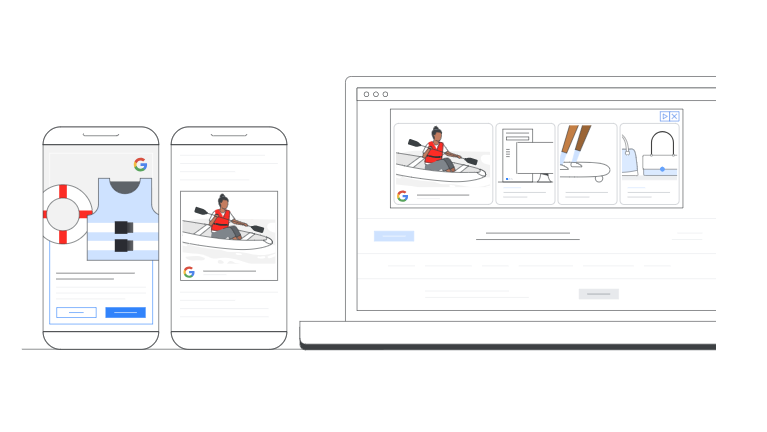
Display campaigns leverage visual ad formats, including static banners, animated graphics, and interactive ads, to reach audiences across websites and mobile apps within the Google Display Network. Advertisers can target users based on demographics, interests, behavior, and specific websites. Display campaigns are ideal for building brand awareness, reaching a broad audience, and nurturing prospects in various stages of the buyer’s journey.
3. Video Campaigns:
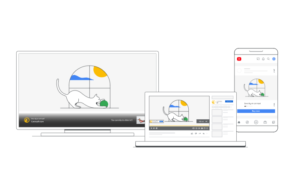
Video campaigns promote video content on YouTube and other Google partner sites. Advertisers can create video ads that appear before, during, or after YouTube videos or in YouTube search results. These ads can be skippable or non-skippable and may include call-to-action overlays. Video campaigns are powerful for conveying brand stories, showcasing products, and engaging users with captivating visuals.
4. Shopping Campaigns:

Shopping campaigns are specifically designed for eCommerce businesses. They use product data from Google Merchant Center to display product listings directly within Google search results. These listings include images, prices, and details. Shopping ads allow users to view product information before clicking, making them highly effective for driving online sales and showcasing product catalogs.
5. Discovery Campaigns:
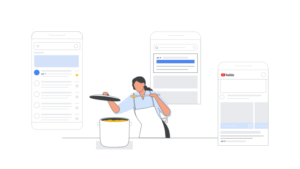
Discovery campaigns span multiple Google properties, including YouTube, Gmail, and the Discover feed. They serve visually appealing and personalized ads to users during moments of exploration and discovery. Discovery campaigns are effective for raising brand awareness, engaging users with immersive content, and reaching audiences in different contexts.
6. Local Campaigns:
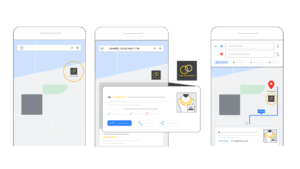
Local campaigns aim to drive users to physical store locations. These campaigns utilize various ad formats, including search, display, and maps ads, to encourage in-store visits. Advertisers can set specific business locations and promote offers, directions, and contact information to local users searching for nearby services or products.
Each campaign type serves distinct purposes and offers a range of targeting options, making Google Ads a versatile platform that can accommodate a wide variety of advertising goals and strategies. Advertisers can choose the campaign type that best aligns with their specific objectives and audience targeting needs.
Tracking and measuring the success of your PPC (Pay-Per-Click) campaigns is crucial to ensure you’re achieving your desired outcomes and optimizing your advertising efforts. Here’s how you can effectively track and measure PPC campaign success:
Conversion Tracking: Implement conversion tracking on your website. This allows you to monitor specific actions taken by users, such as form submissions, purchases, or sign-ups. Conversion tracking provides insight into the ROI of your campaigns.
Set Clear Goals: Define clear and measurable campaign goals upfront. Whether it’s increasing sales, generating leads, or boosting website traffic, having well-defined objectives makes it easier to measure success.
Key Performance Indicators (KPIs): Identify key metrics and KPIs that align with your goals. Common PPC KPIs include Click-Through Rate (CTR), Conversion Rate, Cost-Per-Click (CPC), and Return on Ad Spend (ROAS).
Google Analytics: Integrate Google Analytics with your PPC accounts to gain deeper insights into user behavior, traffic sources, and website performance. It provides valuable data for evaluating campaign success.
UTM Parameters: Use UTM parameters in your ad URLs to track the source, medium, and campaign associated with each click. This data can be analyzed in Google Analytics to understand the effectiveness of different marketing channels.
Ad Platform Analytics: Leverage the analytics tools provided by the PPC advertising platforms (e.g., Google Ads, Facebook Ads). These platforms offer detailed campaign performance data, including clicks, impressions, and conversions.
A/B Testing: Conduct A/B tests by creating multiple ad variations with different elements (e.g., headlines, ad copy, images). Compare performance to identify which elements drive better results.
Quality Score: Monitor the Quality Score of your Google Ads campaigns. A higher Quality Score can lead to lower CPC and better ad placements, impacting campaign success.
Custom Reports: Create custom reports or dashboards in your PPC platforms or analytics tools to visualize and track key metrics over time.
Attribution Models: Understand how different touchpoints in the customer journey contribute to conversions. Analyze attribution models to determine the role of PPC in the overall conversion path.
Budget vs. ROI: Regularly evaluate the relationship between your PPC budget and the return on investment (ROI) it generates. Adjust your budget allocation to optimize ROI.
Regular Performance Reviews: Schedule regular reviews of your PPC campaign performance. Analyze data, identify trends, and make data-driven adjustments to improve results.
Competitor Analysis: Monitor your competitors’ PPC efforts to gain insights and stay competitive. Tools like SEMrush or SpyFu can provide competitive intelligence.
Consultation with Experts: Consider consulting with PPC experts or agencies who can provide in-depth analysis and recommendations for campaign improvement.
Communication: Maintain open communication with your PPC team or agency to discuss results, goals, and adjustments to the strategy.
Tracking and measuring the success of your PPC campaigns is an ongoing process. By continually monitoring and analyzing performance data, you can make informed decisions to optimize your campaigns and achieve your desired outcomes.
Yes, there are several common mistakes that advertisers should be aware of and strive to avoid in PPC (Pay-Per-Click) advertising campaigns. Here are some of the most frequent pitfalls:
Ignoring Keyword Research: Failing to conduct thorough keyword research can result in poor targeting and wasted ad spend. It’s essential to identify relevant keywords that align with your business and audience.
Poorly Crafted Ad Copy: Writing ad copy that lacks clarity, relevance, or a compelling call-to-action can lead to low click-through rates (CTR). Create concise, engaging ad copy that entices users to click.
Ignoring Negative Keywords: Neglecting negative keywords can cause your ads to appear for irrelevant searches, driving up costs without delivering meaningful results. Regularly review and update your negative keyword list.
Overlooking Quality Score: Quality Score plays a significant role in ad placement and cost-effectiveness. Neglecting to improve Quality Scores can lead to higher CPC and lower ad positions.
Inadequate Landing Pages: Sending users to irrelevant or poorly designed landing pages can result in high bounce rates and low conversion rates. Ensure that your landing pages align with your ad’s message and provide a seamless user experience.
Failure to Set Conversion Tracking: Not implementing conversion tracking makes it impossible to measure the ROI of your campaigns accurately. Ensure that conversion tracking is correctly set up for all desired actions on your website.
Lack of Mobile Optimization: With the increasing use of mobile devices, it’s crucial to optimize your ads and landing pages for mobile users. Failing to do so can lead to missed opportunities.
Bidding Without Strategy: Blindly bidding on keywords without a clear strategy can drain your budget quickly. Develop a bidding strategy based on your goals and budget constraints.
Inadequate Budget Planning: Setting an unrealistic or insufficient budget can limit the effectiveness of your campaigns. Align your budget with your objectives and the competitiveness of your market.
Ignoring Ad Extensions: Ad extensions provide additional information and opportunities for users to engage with your ads. Not using them can result in missed chances for higher CTR and conversions.
Neglecting Ad Testing: Not running A/B tests to optimize ad elements (e.g., headlines, descriptions, visuals) can lead to missed opportunities for improving ad performance.
Inconsistent Monitoring: Failing to regularly monitor and adjust campaigns based on performance data can result in missed opportunities and inefficient spending.
Not Considering the Full Customer Journey: Focusing solely on last-click attribution can lead to undervaluing the impact of PPC ads on the overall customer journey.
Ignoring Geographic Targeting: For businesses with specific service areas, neglecting to use geographic targeting can lead to irrelevant clicks from outside your target regions.
Skipping Competitor Analysis: Failing to analyze competitor strategies can result in missed opportunities to gain a competitive edge and capture market share.
Avoiding these common PPC mistakes and adopting best practices can help you run more effective and cost-efficient advertising campaigns, ultimately driving better results for your business.
Conversion Rate is a vital metric in digital marketing that measures the percentage of website visitors or users who take a desired action or conversion on your website. Conversions can vary depending on your goals and can include actions like making a purchase, filling out a contact form, subscribing to a newsletter, or downloading a whitepaper. The formula for calculating conversion rate is:
Conversion Rate (%) = (Number of Conversions / Total Number of Visitors) x 100
For example, if your website had 1,000 visitors and 50 of them made a purchase, your conversion rate would be:
Conversion Rate = (50 / 1,000) x 100 = 5%
A higher conversion rate is typically a positive indicator of the effectiveness of your website, landing pages, and marketing campaigns. It means a larger proportion of your visitors are taking the desired actions, which can lead to increased sales, leads, or other valuable outcomes.
Conversion rate optimization (CRO) is the practice of improving your website and marketing materials to increase the likelihood of conversions. By analyzing user behavior, conducting A/B testing, and making data-driven changes, businesses can enhance their conversion rates and improve the overall performance of their online presence.
Optimizing your landing pages for PPC (Pay-Per-Click) conversions is essential to maximize the effectiveness of your advertising campaigns. Here are key steps to help you optimize your landing pages for better PPC results:
Clear and Relevant Messaging:
- Ensure that your landing page content aligns with the ad that led users to it. The messaging, including headlines and ad copy, should be consistent. This helps users feel they’re in the right place.
Compelling Headlines:
- Craft attention-grabbing headlines that communicate the value proposition of your offer. Use concise and persuasive language to entice users to stay and explore further.
Focused Content:
- Keep the content on your landing page focused and concise. Highlight the most important information, benefits, and features of your offer. Avoid distractions and unnecessary information.
High-Quality Visuals:
- Use relevant and high-quality images or visuals that support your message. Visual content can help convey information quickly and engage users.
Call-to-Action (CTA):
- Place a clear and prominent CTA button on your landing page. Use action-oriented language (e.g., “Get Started,” “Request a Quote”) and make it stand out visually.
Form Optimization:
- If your conversion goal involves a form, optimize it for ease of use. Reduce the number of required fields, use descriptive labels, and provide real-time feedback for form validation.
Trust Signals:
- Display trust signals such as customer reviews, testimonials, security badges, and any relevant certifications to build trust with visitors.
Mobile Optimization:
- Ensure that your landing page is fully responsive and mobile-friendly. Many users access websites and ads via mobile devices, so a seamless mobile experience is crucial.
Loading Speed:
- Optimize your landing page for fast loading times. Slow-loading pages can lead to higher bounce rates and lower conversions. Compress images, minimize code, and use content delivery networks (CDNs) if necessary.
A/B Testing:
- Conduct A/B tests to experiment with different variations of your landing page elements, including headlines, visuals, CTAs, and forms. Use data to identify which elements perform best.
Remove Distractions:
- Minimize navigation menus, external links, and other distractions that could lead visitors away from your conversion goal. The focus should be on completing the desired action.
Relevant Keywords:
- Ensure that the keywords used in your PPC campaign are present on the landing page. This reinforces the connection between the ad and the landing page, improving quality score and user experience.
Personalization:
- Use dynamic content to personalize the landing page based on user demographics, location, or previous interactions with your site.
Progress Indicators:
- For multi-step forms or processes, provide progress indicators to show users how far they are from completing the action. This can reduce abandonment rates.
Testing and Iteration:
- Continuously monitor the performance of your landing pages and make data-driven improvements. What works today may need adjustments in the future as user behavior evolves.
Remember that the primary goal of your landing page is to guide users toward the desired conversion action. By implementing these optimization techniques, you can enhance the user experience, boost conversion rates, and ultimately maximize the ROI of your PPC campaigns.
Click fraud in PPC campaigns refers to the fraudulent or malicious clicking of pay-per-click advertisements with the intent to drain an advertiser’s budget, manipulate advertising costs, or artificially inflate ad performance metrics. This unethical practice can have significant financial repercussions for businesses running PPC campaigns.
Click fraud can occur in various ways:
Competitor Click Fraud: Rival businesses or individuals intentionally click on your ads to deplete your advertising budget and diminish the visibility of your ads.
Publisher Click Fraud: Some website owners or publishers may engage in click fraud by clicking on ads on their own sites to generate more revenue from ad clicks.
Bot Clicks: Automated bots or scripts may click on ads without any genuine interest in the advertised products or services. These bots can mimic human behavior, making detection challenging.
Click Farms: Some unethical organizations employ click farms, where individuals are paid to click on ads en masse, artificially inflating click numbers.
Malware-Driven Clicks: Malicious software or malware infections on users’ devices can lead to unintended clicks on ads, unbeknownst to the users.
Click fraud can have serious consequences for PPC advertisers, including wasted ad spend, decreased ROI, and skewed performance data. To combat click fraud, advertisers employ various preventive measures, including click fraud detection tools, IP blocking, monitoring for suspicious click patterns, and regularly updating negative keyword lists. Additionally, PPC advertising platforms often have built-in safeguards and fraud detection systems to help mitigate click fraud.
Click fraud in PPC (Pay-Per-Click) campaigns is a significant concern for marketers because it can drain ad budgets and distort performance metrics. Click fraud occurs when someone intentionally clicks on your ads with the aim of depleting your budget or undermining your campaign’s effectiveness. We can implement various strategies to effectively deal with click fraud in our PPC campaigns:
- Monitor Click Activity:
- Together, let’s regularly review our campaign’s click data, keeping an eye out for unusual patterns like sudden spikes in clicks from specific IP addresses or regions.
- We can set up automated alerts to notify us when there’s unusual click activity. Many PPC platforms and third-party tools offer this feature.
2. IP Exclusions:
- We’ll work on identifying and excluding IP addresses or IP ranges associated with click fraud, which can be configured within our PPC platform’s settings.
- It’s important to note that some fraudsters may use VPNs or proxies to hide their IP addresses, so we’ll remain vigilant.
3. Use Click Fraud Detection Software:
- Let’s consider using third-party click fraud detection tools or services. These tools can analyze click data and flag potentially fraudulent clicks.
- Some well-known click fraud detection services include ClickCease, PPC Protect, and ClickGuard.
4. Implement Click Tracking:
- We can employ click tracking parameters in our ad URLs to monitor the sources of clicks, helping us identify suspicious websites or publishers engaging in click fraud.
- Utilizing Google’s ValueTrack parameters and other tracking tools can be beneficial for this purpose.
5. Set Click and Conversion Limits:
- As a team, we’ll set maximum click and conversion limits for our campaigns to prevent excessive spending due to fraudulent clicks.
- We’ll exercise caution to avoid setting these limits too low and inadvertently restricting legitimate traffic.
6. Targeted Campaigns:
- Consider running campaigns that specifically target geographic regions or audiences, reducing exposure to click fraud from certain sources.
7. Analyze Click Quality:
- We’ll collectively assess the quality of clicks by monitoring conversion rates, bounce rates, and time spent on our landing pages. High click-through rates (CTR) with low conversion rates can indicate click fraud.
- Adjusting our campaign settings or keywords can help attract more relevant traffic.
8. Report to the PPC Platform:
- If we suspect click fraud, we’ll report it to the PPC platform we’re using (e.g., Google Ads, Microsoft Advertising). Platforms often investigate and may provide refunds for fraudulent clicks if evidence is found.
9. Legal Action:
- In rare cases, we can explore legal action against click fraud perpetrators. However, it’s essential to recognize that this can be a challenging and costly process.
10. Continuous Monitoring and Adaptation:
- As a team, we’ll stay vigilant because click fraud tactics can evolve. We’ll continuously monitor our campaigns and adapt our strategy as needed to stay ahead of potential fraud.
By collaborating on these strategies, we can minimize the impact of click fraud on our PPC campaigns and make the most of our advertising budget.
